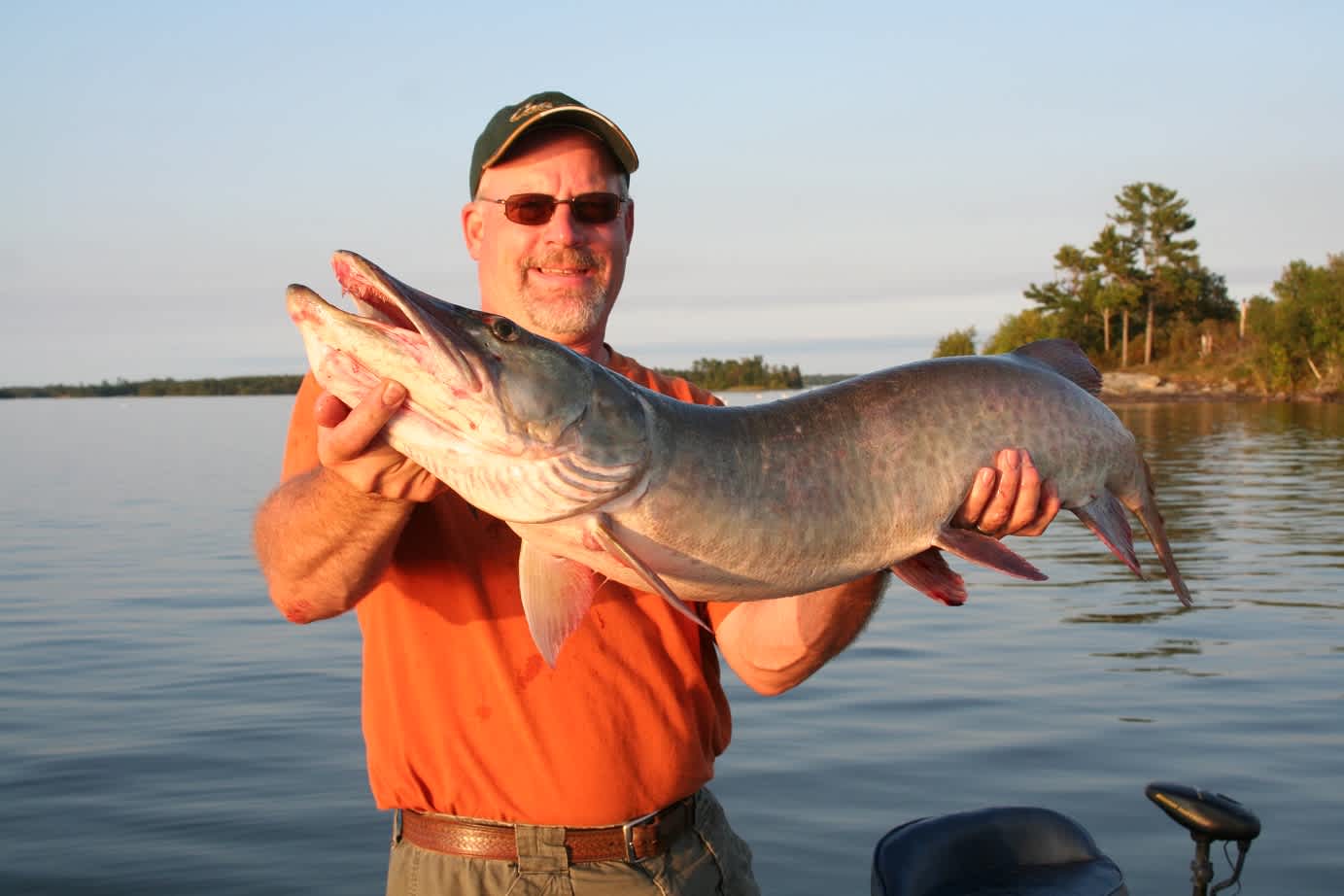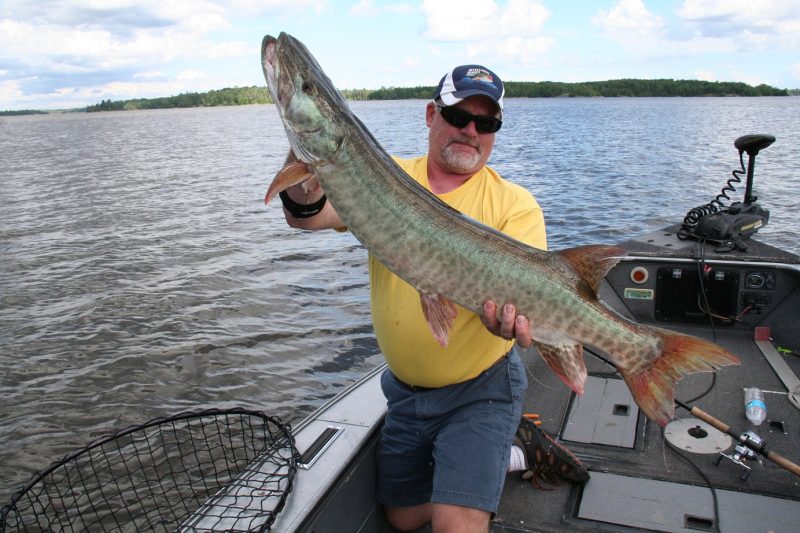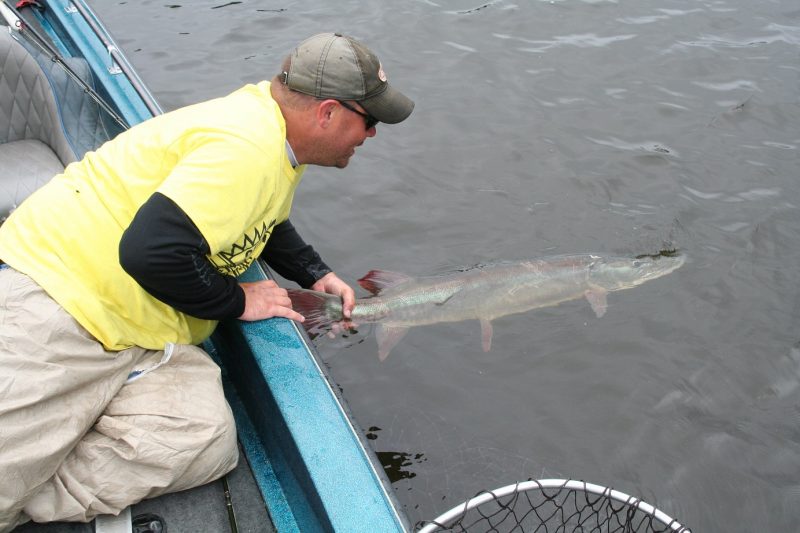Catch Muskies with the Perfect Figure-8
Bernie Barringer 08.09.16

Muskellunge are quite likely the most frustrating fish that swims in freshwater. Known as the fish of 10,000 casts, their elusiveness is legendary, but it’s their propensity to follow a lure without biting it that drives a person crazy. After hours of casting big baits, finally, here comes one. The muskie swims all the way to your boat, even follows the lure around a figure-8 a few times, then leaves. Just leaves. The experience leaves a muskie angler standing in the boat wondering why he does this to himself. But he keeps doing it.
We’ll never catch every muskie that comes to boatside. Fact is, in a way it’s one of the things that keeps us coming back for more. But there are a few things you can do to increase the odds of turning lookers into biters.
Don’t Spook It!
One of the often overlooked aspects of catching a following muskie is first avoiding things that scare it away. The shock of seeing a big fish after hours of seeing nothing can cause you to make quick movements that send the fish back to the depths. Stay cool and make your moves slowly and deliberately. Over time, I’ve become convinced that the color of my clothing, especially shirt and hat, make a big difference. These days, I usually wear subtle colors such as blues, grays and other colors that can match the sky. I’ve even gone so far as to put on an orange t-shirt at sunset.

React Appropriately
Long-bodied fish in the esox family are built for speed at the sacrifice of agility. You cannot move a lure in the water fast enough to keep it away from a muskie that wants to eat it. But you can move it in a way that a big fish cannot turn fast enough to bite it.
Gone are the days of short muskie rods with the action of a pool cue stick. Today’s popular muskie rods are 8 to 9 feet long. This not only allows you to use all of the rod to fight the fish, but it also makes it possible to make wide, sweeping figure-8 maneuvers.
When you see a muskie behind your bait, you can quickly gauge its mood. A fish that is following a few feet below and well behind the lure isn’t in an aggressive mood, but that doesn’t mean it can’t be caught. However, the ones most likely to eat are coming in right behind the lure, often opening and closing their mouth slightly, as if trying to taste the lure.
These close followers are the most likely to bite as soon as the lure does something different. A quick speed-up as soon as you see them can work, as can the turn when the lure reaches the boat. When the lure is reeled up to within about 1 foot of your rod tip (usually about the length of your leader), start sweeping the lure to the side. In fact, I make this “L” turn on most every cast just in case there is one following that I haven’t seen. This allows me to keep my lure in the water a little longer until I am sure there isn’t a fish closing late.
Wide Turns
After you make the first change of direction, make a wide, sweeping turn in a loop and start the first figure-8. Some people like to slow the lure down in an attempt to “feed” it to a following fish, and that can work, but more often than not, the fish may be triggered to bite by something that seems like an escape maneuver. If you do slow down the lure, quickly pick the speed back up.
Palm the reel with your left hand (if you are left-handed, do the opposite) and put your right hand over the base of the rod handle. Use the rod sort of like a joystick with your left hand as the fulcrum as you move the rod tip with your right hand. You can really make a wide figure-8 this way and change of speed is magnified.
As the muskie turns away from you during the first figure-8, it’s a good time to get down on your knees. This allows you to get the rod tip well down into the water. Keep the lure moving as long as the fish is still there. It may disappear out of sight for a moment, but often it is just watching, looking for an opportunity to strike, so don’t give up too soon.
After you have made two or three figure-8s and the fish has not bit, it’s time to pull out all the stops and do something radical. One of the most effective triggering mechanisms I’ve seen is to remove the lure from the fish’s field of vision, then have it reappear right in front of their face.
Change of Depth
Diving the lure deeper in the water can throw the muskie a curveball it cannot stand to resist, and radical changes in depth from deep to shallow are some of the best triggers I’ve seen. One of the most effective moves to trigger following muskies was shown to me more than 20 years ago by longtime Lake of the Woods muskie guide Ron Wackwitz (218.689.1805). The first time I saw this done, Ron was down at the water level with his rod all the way into the water up to the reel. He then pulled back hard on the handle so the rod tip and lure came straight up from the depths. When it was just about to break the surface, it was slammed by the 49-incher that had been just an observer up until that point. This strong upward lift has put several muskies in my net since I first saw it, and I use it on most every following fish that doesn’t bite after the first few turns.
Don’t give up on fish too soon. If they are interested enough to stay around, they are interested enough to bite. As long as you can catch a glimpse of the fish every so often, keep going. Alternate between the sweeping turns with depth variations and the lift maneuver. Plenty of fish have been caught after 15-20 figure-8s to convince me that it can be done.

Muskies will drive you crazy. Just seeing a big one coming in hard can make your knees shake, and when it leaves it will make you shake your fist. But if you practice doing the right boatside maneuvers, you’ll turn those followers into releases more often, and help you retain a fragment of your sanity.
Check out the YouTube video below to see a successful figure-8 in action!

